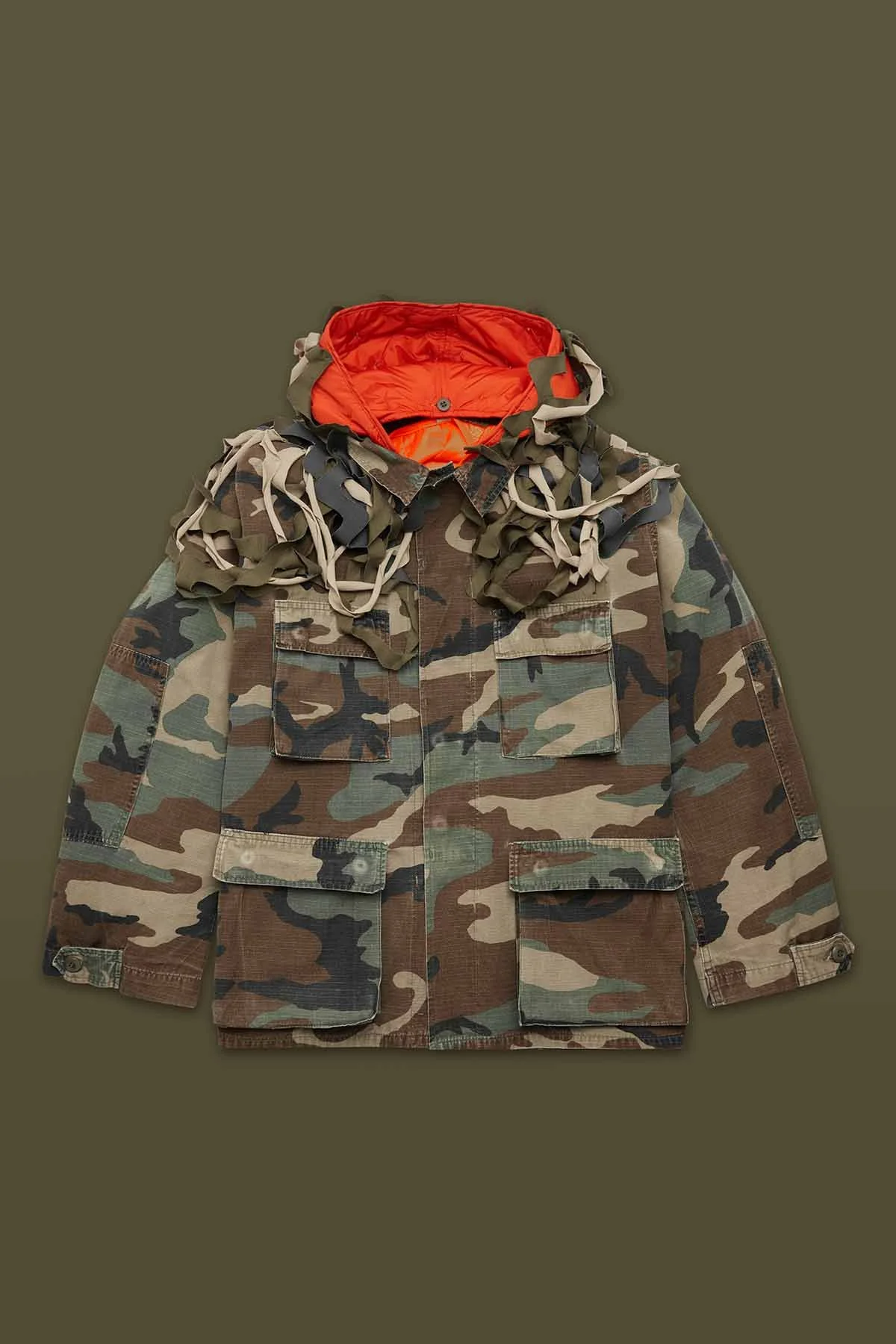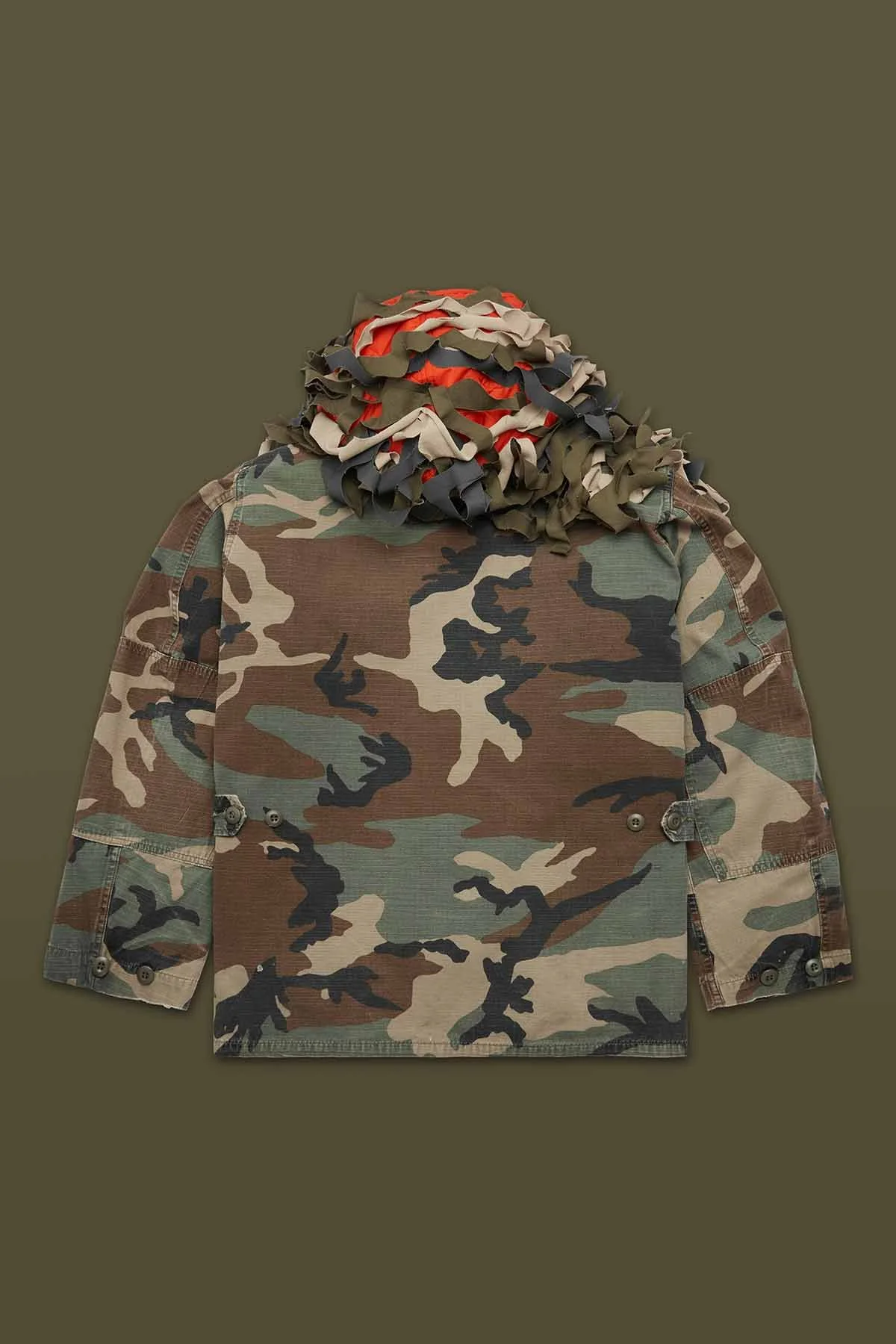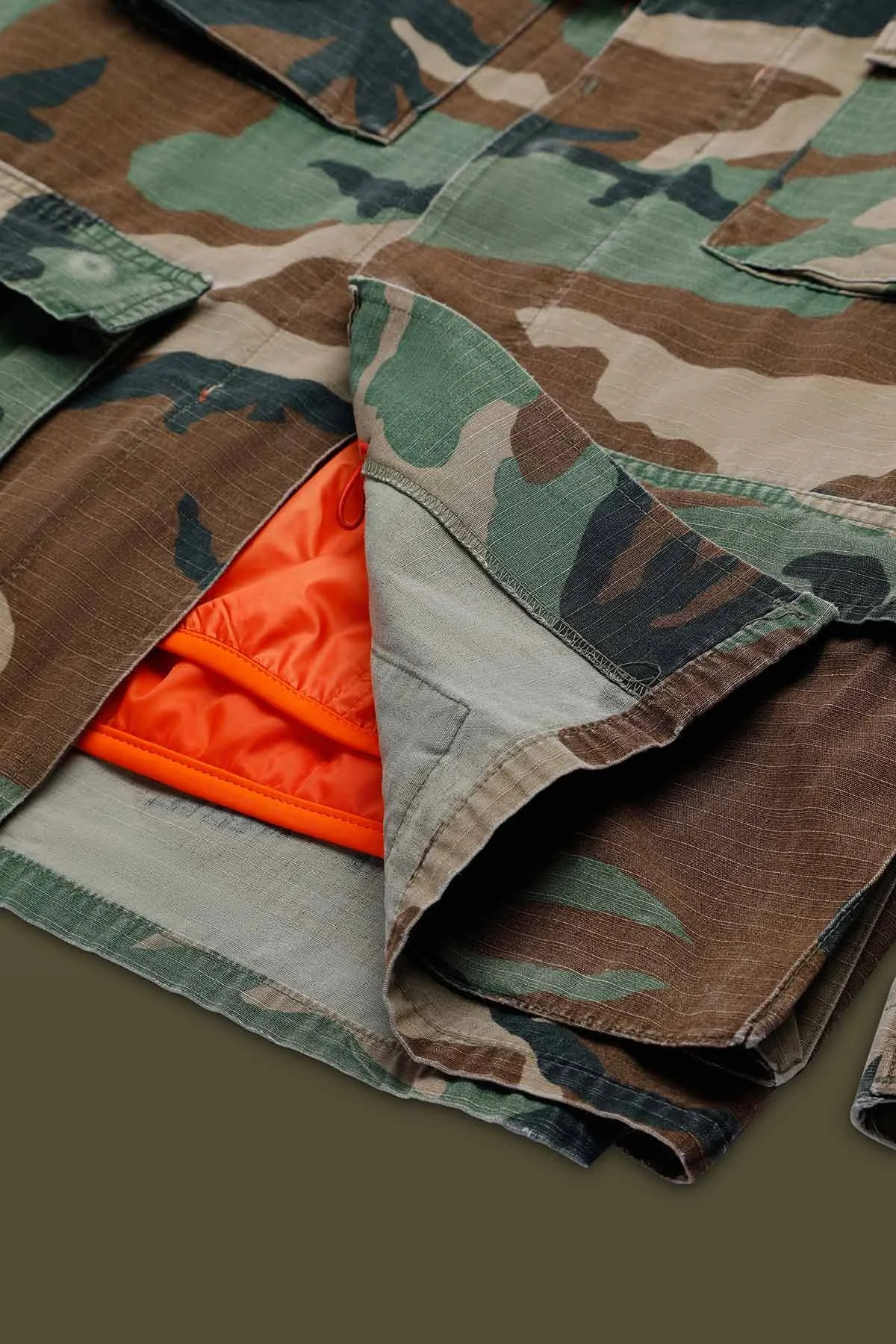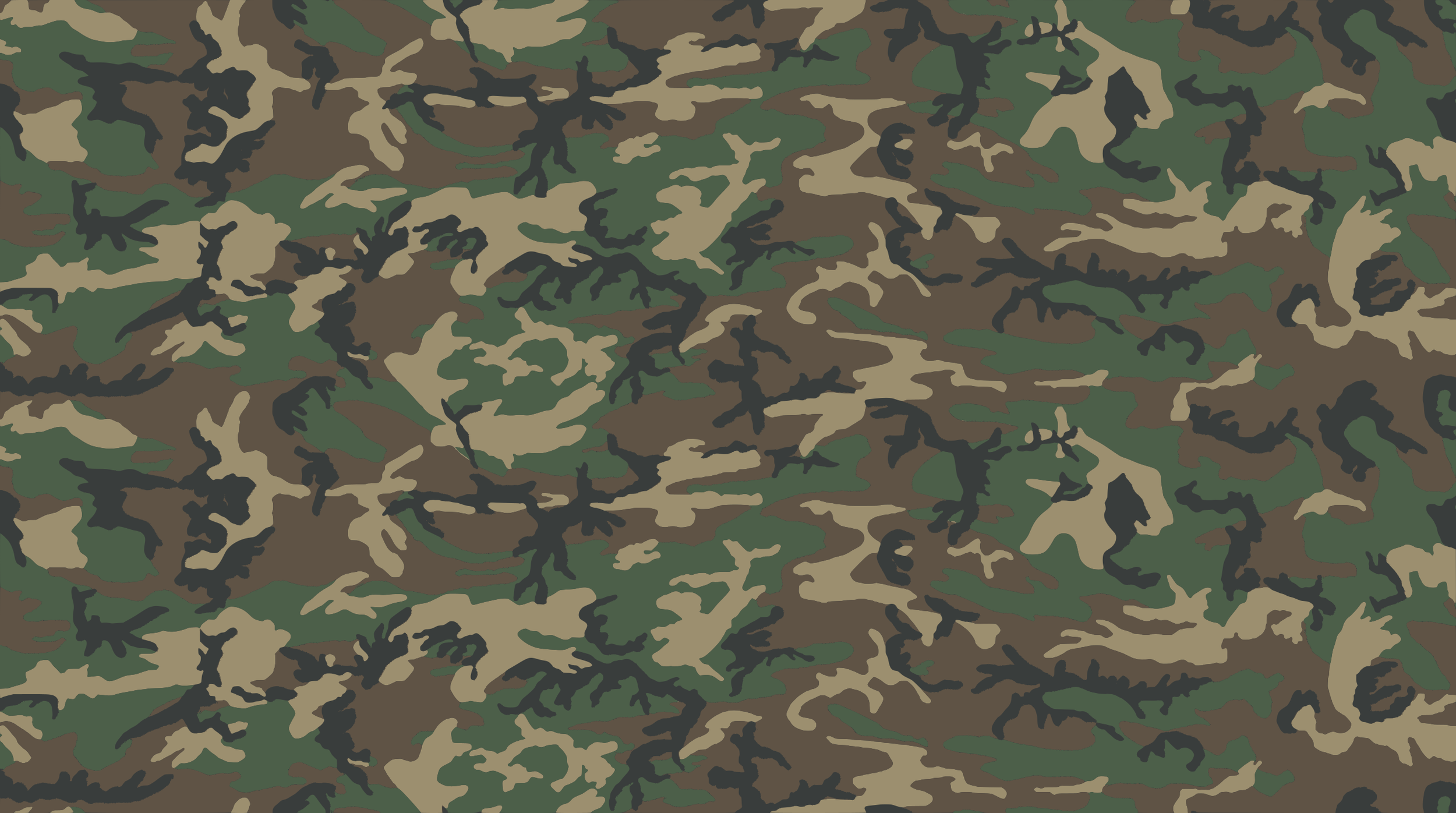MYAR RE_DROP01 /WASTOP / PRESENTS
USJ9D
US ARMY WOODLAND BDU CAMOU JACKET -1990'S
PRESENT / CAMOU ON CAMOU
US Army Woodland Camouflage BDU Jacket, camou on camou.
Scraps of fabric from prototypes and dead stock, lasered and sewn individually on hood, shoulders and back to recreate the original camouflage effect on which camouflage is based.
Normally we use nature (leaves, branches and land) to camouflage.
Here we used our left over which thus becomes the main interpreter of the design of this jacket.
Padded orange lining inside embroidered with onion stitch, detachable and wearable individually.
The hood is detachable and covered with the same fabric offcuts.
PAST
The Battle Dress Uniform (BDU) is a military camouflage uniform used by the US military as a regular combat outfit from the early 1980s to the mid-2000s.
BDUs were initially issued only in a 50/50 nylon-cotton twill blend, called the Temperate Weather BDU or TWBDU.
The M81 Woodland has been one of the most widely used camouflage patterns in the US military.
This camouflage was used by all branches of the Army, as well as the US Navy and Air Force from 1981 until it was replaced in 2006. It is a high-contrast, four-colour (black, green, brown, sand-coloured), irregularly patterned camouflage scheme.
WOODLAND CAMOU
The U.S. Woodland is a camouflage pattern that was used as the default camouflage pattern issued to the United States Armed Forces from 1981, with the issue of the Battle Dress Uniform, until its replacement in the mid to late 2000s.[1] It is a four color, high contrast disruptive pattern with irregular markings in green, brown, sand and black. It is also known unofficially by its colloquial moniker of "M81", though this term was not officially used by the U.S. military. Although completely phased out of frontline use in the U.S. Armed Forces, U.S. Woodland is still used on some limited level by some branches such as MOPP suits, equipment and vests left over while some modernized uniforms (either BDU or commercial) were worn specifically by special forces such as USMC Forces Special Operations Command and United States Navy Seabees.
PACKAGING
Our packaging bag is made of 97% vegetable fibre (beetroot or sugar cane). The only reason this does not reach 100% is because it is manufactured using machines that usually process plastic which may leave small traces behind. The raw material is completely petrol-free and fossil substance-free. We ask you to always be careful not to dispose of it in the environment, but for safety we have added an additive that makes it completely biodegradable within 48 months.
MYAR is committed every day to selecting products that do not pollute the planet.
HANGTAG
MYAR commitment is to bring back to life past used military garments that have been stocked for long time in darkened warehouse, bringing back the light in the present time, for a second life in a civil environment.
The up-cycling process involving MYAR is not only an aesthetic intervention but also a process of historical knowledge
This process of customization is also witnessed by a small white cloth sachet containing scraps of fabrics: a part of the past of this garment, which has been modified from the original to be worn today for the future coming.
FABRIC
Applied on a selected range of fabrics, ReLiveTex certifies that they have been removed from devaluation processes (landfill or incinerator) and promoted to new uses as required by the objectives expressed by the Circular Economy Package of the European Union (directive 2018/851).
ReLiveTex is a type II environmental assertion congruent with the provisions of ISO 14021 – point 7.8.1.1 C. and obtained after an inspection audit carried out by Centrocot spa.
Choosing fabrics marked with the ReLiveTex logo allows you to characterize your collection in terms of sustainability.
UPCYCLING WASTE WITH AN ARTISTIC EYE








